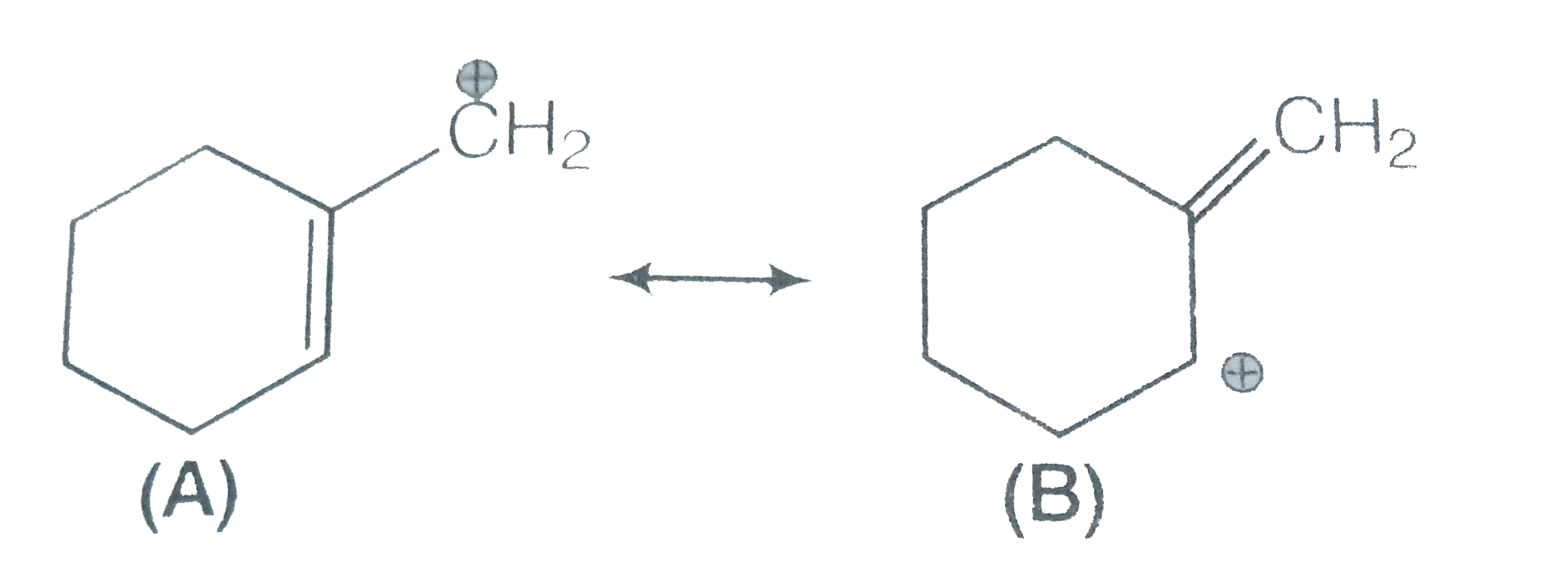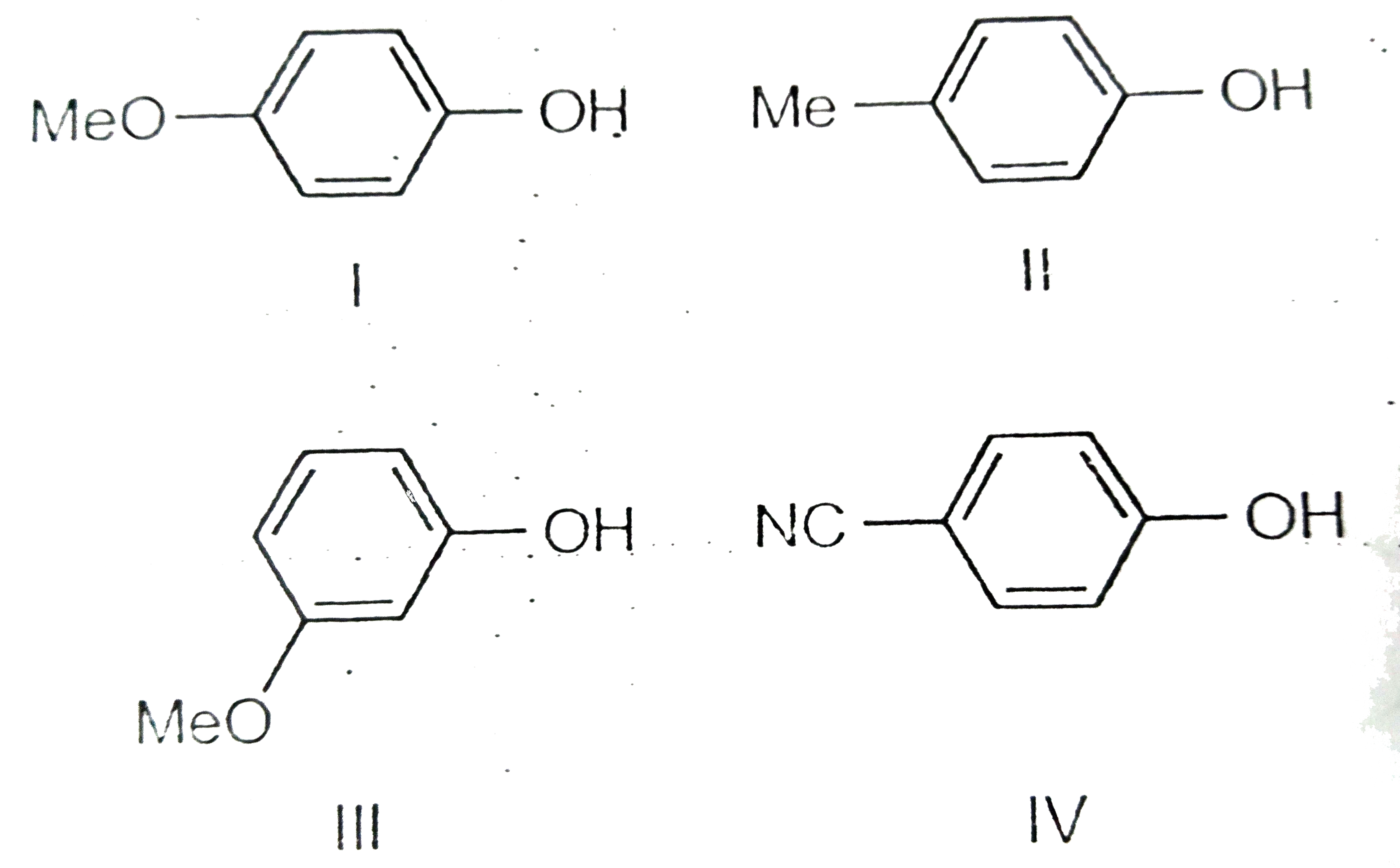'Stability of carbocations depends upon the electron releasing inductive effect of groups adjacent to positively charged atom involvement of neighbouring groups in hyperconjugation and resonace''.
Write structure of various carbocations that can be obtained from 2-methylbutane. Arrange these carbocations in order of increasing stability
To solve the problem of determining the stability of carbocations derived from 2-methylbutane, we will follow these steps:
Step 1: Draw the structure of 2-methylbutane
2-methylbutane has the following structure:
CH3∣CH3−CH−CH2−CH3
This can also be represented as:
CH3∣CH3−CH−CH2−CH3
Step 2: Identify the possible carbocations
From 2-methylbutane, we can generate the following carbocations by removing a hydrogen atom from different positions:
1. Carbocation 1 (1° carbocation): Removing a hydrogen from the terminal CH3 group:
CH3∣CH3−CH−CH2+−CH3
(This is a primary carbocation.)
2. Carbocation 2 (2° carbocation): Removing a hydrogen from the CH2 group adjacent to the positively charged carbon:
CH3∣CH3−CH±CH2−CH3
(This is a secondary carbocation.)
3. Carbocation 3 (3° carbocation): Removing a hydrogen from the central CH group:
CH3∣CH3−C±CH2−CH3
(This is a tertiary carbocation.)
4. Carbocation 4 (1° carbocation): Removing a hydrogen from the other terminal CH3 group:
CH3+∣CH3−CH−CH2−CH3
(This is also a primary carbocation.)
Step 3: Analyze the stability of each carbocation
The stability of carbocations is influenced by the degree of substitution:
- Tertiary (3°) carbocations are the most stable due to hyperconjugation and inductive effects from adjacent alkyl groups.
- Secondary (2°) carbocations are less stable than tertiary but more stable than primary.
- Primary (1°) carbocations are the least stable.
Step 4: Arrange the carbocations in order of increasing stability
Based on the analysis:
1. Carbocation 1 (1°)
2. Carbocation 4 (1°)
3. Carbocation 2 (2°)
4. Carbocation 3 (3°)
Final Stability Order
Thus, the order of increasing stability of the carbocations derived from 2-methylbutane is:
1. Carbocation 1 (1°)
2. Carbocation 4 (1°)
3. Carbocation 2 (2°)
4. Carbocation 3 (3°)
Summary of Stability Order:
1° < 1° < 2° < 3°
2-methylbutane has the following structure:
CH3∣CH3−CH−CH2−CH3
This can also be represented as:
CH3∣CH3−CH−CH2−CH3
From 2-methylbutane, we can generate the following carbocations by removing a hydrogen atom from different positions:
CH3∣CH3−CH−CH2+−CH3
(This is a primary carbocation.)
CH3∣CH3−CH±CH2−CH3
(This is a secondary carbocation.)
CH3∣CH3−C±CH2−CH3
(This is a tertiary carbocation.)
CH3+∣CH3−CH−CH2−CH3
(This is also a primary carbocation.)
The stability of carbocations is influenced by the degree of substitution:
- Tertiary (3°) carbocations are the most stable due to hyperconjugation and inductive effects from adjacent alkyl groups.
- Secondary (2°) carbocations are less stable than tertiary but more stable than primary.
- Primary (1°) carbocations are the least stable.
Based on the analysis:
1. Carbocation 1 (1°)
2. Carbocation 4 (1°)
3. Carbocation 2 (2°)
4. Carbocation 3 (3°)
Thus, the order of increasing stability of the carbocations derived from 2-methylbutane is:
1. Carbocation 1 (1°)
2. Carbocation 4 (1°)
3. Carbocation 2 (2°)
4. Carbocation 3 (3°)
1° < 1° < 2° < 3°
Topper's Solved these Questions
- ORGANIC CHEMISTRY : SOME BASIC PRINCIPLES AND TECHNIQUESBOOK - NCERT EXEMPLAR ENGLISHCHAPTER - ORGANIC CHEMISTRY : SOME BASIC PRINCIPLES AND TECHNIQUESEXERCISE - Matching the columns
5 Videos
- ORGANIC CHEMISTRY : SOME BASIC PRINCIPLES AND TECHNIQUESBOOK - NCERT EXEMPLAR ENGLISHCHAPTER - ORGANIC CHEMISTRY : SOME BASIC PRINCIPLES AND TECHNIQUESEXERCISE - Assertion and Reason
6 Videos
- ORGANIC CHEMISTRY : SOME BASIC PRINCIPLES AND TECHNIQUESBOOK - NCERT EXEMPLAR ENGLISHCHAPTER - ORGANIC CHEMISTRY : SOME BASIC PRINCIPLES AND TECHNIQUESEXERCISE - Long Answer type question
6 Videos
- HYDROGENBOOK - NCERT EXEMPLAR ENGLISHCHAPTER - HYDROGENEXERCISE - LONG ANSWER TYPE QUESTIONS
8 Videos
- REDOX REACTIONSBOOK - NCERT EXEMPLAR ENGLISHCHAPTER - REDOX REACTIONSEXERCISE - LONG ANSWER TYPE QUESTIONS
6 Videos
Similar Questions
'Stability of carbocations depends upon the electron releasing inductive effect of groups adjacent to positively charged atom involvement of neighbouring groups in hyperconjugation and resonace''.
Which of the following ions is more stable ? Use resonance of explain your answer.

View Solution'Stability of carbocations depends upon the electron releasing inductive effect of groups adjacent to positively charged atom involvement of neighbouring groups in hyperconjugation and resonace''.
The structure of triphenylmethyl cation is given below. This is very stable and some of its salts can be stored for months. Explain the cause of high stability of this cation

View Solution
Knowledge Check
Assertion: - 3∘ carbocations are more stable than 1∘ and 2∘ carbocations.
Reason :- The+I effect of alkyl groups decreases the magnitude of positive charge to the maximum possible extent in a 3∘ carbocationAIf both Assertion and Reason are CORRECT and Reason is the CORRECT explanation of the Assertion.BIf both Assertion and Reason are CORRECT but Reason is not the CORRECT explanation of the Assertion.CIf Assertion is CORRECT but Reason is INCORRECT.DIf Assertion is INCORRECT but Reason is CORRECT.
'Stability of carbocations depends upon the electron releasing inductive effect of groups adjacent to positively charged atom involvement of neighbouring groups in hyperconjugation and resonace''.
Draw the possible resonance structures for CH3−..O..−+CH2 and predict which of the structures is more stable. Give reason for your answer.
View SolutionReaction intermdiates are short lived species and are highly reactive. They are formed by heterolytic and homolytic bond fission. There are various types of reaction intermediates in which the most important are carbocation , carbanion and free radical.
Carbocation is an organic species in which carbon have positive charge and six electrons in its outermost shell. The stability of carbocation can be increased by positive inductive effect, hyperconjugation and delocalisation. If α-atom with respect to carbocation has one or more lone pair of electron then lone pair of electron strongly stabilises the carbocation due to octet completion.
Species in which carbon have negative charge is called carbanion. Carbanion carries three bond pairs and one lone pair. The stability of carbanion can be increased by negative inductive effect, negative mesomeric effect and delocalisation.
Free radical is a species which have seven electrons in its outermost shell. The stability of free radical can be increased by hyperconjugation and delocalisation.
The stability order of following carbocations is

View SolutionReaction intermdiates are short lived species and are highly reactive. They are formed by heterolytic and homolytic bond fission. There are various types of reaction intermediates in which the most important are carbocation , carbanion and free radical.
Carbocation is an organic species in which carbon have positive charge and six electrons in its outermost shell. The stability of carbocation can be increased by positive inductive effect, hyperconjugation and delocalisation. If α-atom with respect to carbocation has one or more lone pair of electron then lone pair of electron strongly stabilises the carbocation due to octet completion.
Species in which carbon have negative charge is called carbanion. Carbanion carries three bond pairs and one lone pair. The stability of carbanion can be increased by negative inductive effect, negative mesomeric effect and delocalisation.
Free radical is a species which have seven electrons in its outermost shell. The stability of free radical can be increased by hyperconjugation and delocalisation.
The stability order of following free radicals is:
C6H5CIH2⋅CH2 CH3CIIH2⋅CH2 C6H5 III⋅CH2 CH⋅3IV
View SolutionReaction intermdiates are short lived species and are highly reactive. They are formed by heterolytic and homolytic bond fission. There are various types of reaction intermediates in which the most important are carbocation , carbanion and free radical.
Carbocation is an organic species in which carbon have positive charge and six electrons in its outermost shell. The stability of carbocation can be increased by positive inductive effect, hyperconjugation and delocalisation. If α-atom with respect to carbocation has one or more lone pair of electron then lone pair of electron strongly stabilises the carbocation due to octet completion.
Species in which carbon have negative charge is called carbanion. Carbanion carries three bond pairs and one lone pair. The stability of carbanion can be increased by negative inductive effect, negative mesomeric effect and delocalisation.
Free radical is a species which have seven electrons in its outermost shell. The stability of free radical can be increased by hyperconjugation and delocalisation.
Which of the following is the most stable carbanion intermediate ?
View SolutionThe most important condition for resonanace to occur is that the invovled atoms in resonating structure must be coplanar or nearly coplanar for maximum delocalisation. If this condition does not fulfil, involved orbitals cannot be parallel to each other and as consequence delocalisation cannot occur. Bulky groups present on adjacent atoms inhibit the planarity of atoms involved in resonance. this pehnomenon is known as steric inhibition of resonance. Steric inhibition of resonance has profound effect on
Q. Arrange the following in the decreasing order of basicity:
 .
.
View SolutionPhenols are more acidic than aliphatic alcohols acidity of phenols can be further increased by the introduction of electron withdrawing groups in aromatic ring .Acidic nature of phenol is because of the resonance stabilization of phenoxide ion

Arrange the given phanols in the increasing order of acidic strength

View Solution(A) Tertiary carbocations are generally formed more easily than primary carbocations.
(R) Hyperconjugation as well as inductive effect due to additional alkyl groups stabilize tertiary cabocations.
View Solution
